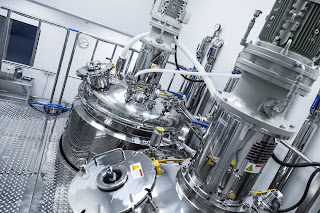312 Park Avenue Unit 145
Clarendon Hills, IL 60514-0145
Phone: 630-321-9646
https://alliancets.com
An informative and educational resource specializing in process control instrumentation, analytical instruments, and related industrial equipment. Content includes technology basics, how-to's, new product developments, and application notes. Blog is courtesy of Alliance Technical Sales, a leading Manufacturers' Rep headquartered in Clarendon Hills, IL and serving customers in Illinois, Indiana, Iowa, Michigan and Wisconsin.
Any process or transfer where beer becomes exposed to oxygen post-fermentation is an opportunity for oxygen to cause staling, muting, and shelf-life reduction. One example is the packaging process. The added oxygen resulting from placing the beer in cans, kegs, or bottles can affect the final product's consistency and taste.
As a brewer, you want to concentrate on producing the best-tasting beer. Therefore, it is critical to know how oxygen affects the brewing process and how packaging can eventually impact your beer's taste. It will give you the trust you need to create award-winning flavors that customers will enjoy, no matter how long the beer sits on the shelf.
METTLER TOLEDO Process Analytics offers the most accurate and cost-effective solutions for measuring dissolved oxygen in brewing applications. These robust optical dissolved oxygen sensors are durable and require minimal maintenance.
For more information about METTLER TOLEDO Process Analytics products in Illinois, Indiana, Iowa, and Wisconsin call Alliance Technical Sales at 630-321-9646 or visit their website at https://alliancets.com.
There are continuous requirements for improve pH, DO and CO2 bioprocessing measurements. Meeting quality objectives while enhancing bioprocessing is a tremendous challenge.
Intelligent Sensor Management (ISM®) is a digital technology for in-line process analytics that incorporates intelligent algorithms into sensors. ISM/digital sensors provide real-time sensor diagnostics information, improves pharmaceutical measurements, provides greater process control and maximizes process equipment reliability/revenue.
For an onsite or on-line demonstration, contact Alliance Technical Sales. Call them at 630-321-9646 or visit their website at https://alliancets.com.
 |
| Stages of brewing and areas for process measurement. |
 |
| Turbidity Sensor |
 |
| DO and CO2 Sensors |
 |
| pH Sensor (Mettler) |
 |
| Mettler Toledo Thornton Model 500TOCi Total Organic Carbon Analyzer Image courtesy Mettler Toledo Thornton |
 |
| Real time microbial monitoring for process water builds quality and production levels. |
 |
| Ingold and Thornton brands provide wide ranging solutions for process analytic challenges. Image courtesy Mettler Toledo |
 |
| Online chlorine and TRO analyzer Photo courtesy HF Scientific |
 |
| The retractable sensor housings are available in several configurations |
 |
| Digital sensor technology opens new avenues for accuracy and efficiency Courtesy Mettler Toledo |